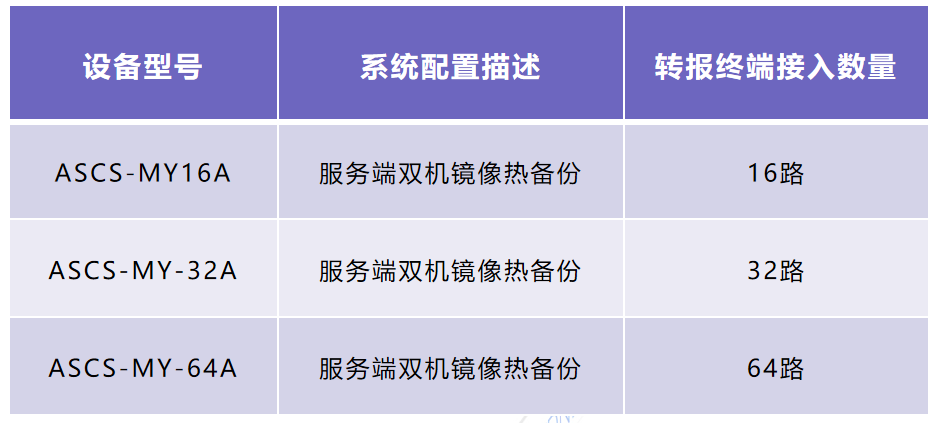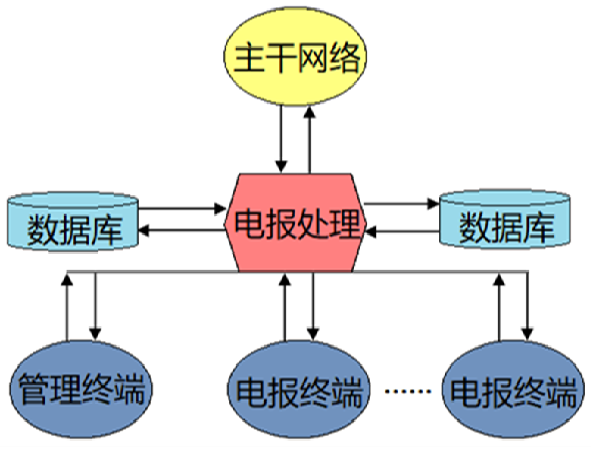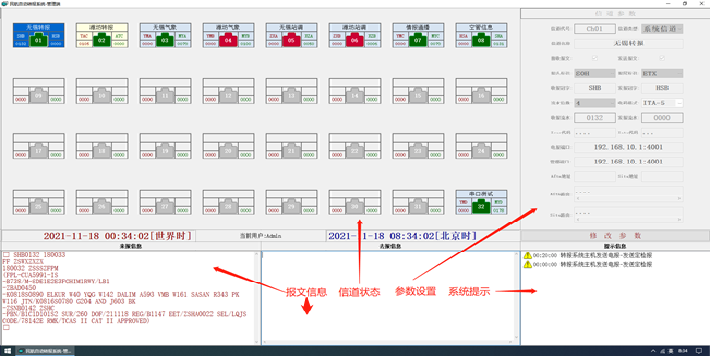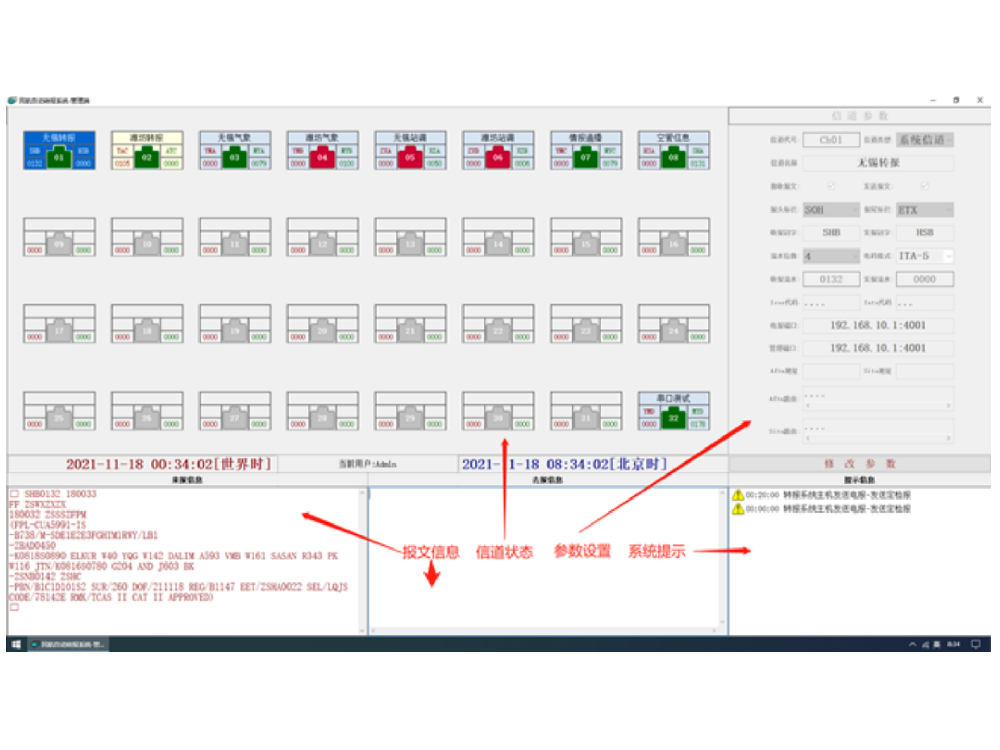ASCS-MY type conversion broadcastingsystem
型号: ASCS-MY16A,ASCS-MY32A,ASCS-MY64A(Route 16/Route 32/Route 64)
描述: This device is independently developed by our company and is currently installed for free at Wuhan Wudangshan Airport as an automatic message switching backup test system.
Product highlights: 1. Uses TCP/IP network interface for transmitting terminal telegraph messages; 2. Automatically categorizes messages and generates various statistical reports with one click; 3. When expanding from 16 channels to 32/64 channels, only additional switches and terminal devices are needed, along with an upgrade of the software version; 4. Handles over 100,000 messages per day. 5. Low investment, stable operation, simple operation.

Main functions: 1. Communication Interface: The system uses TCP/IP network interfaces internally and provides asynchronous and synchronous communication interfaces externally; supports X.25 and frame relay communication interfaces; 2. Message Handling: Automatically processes and forwards standard AFTN/SITA messages, handles problematic messages independently and returns official messages; supports ITA-2 and ITA-5 code formats; provides message editing templates for easy formatting; offers simple routing settings for channels. 3. Data Management: Real-time storage of message data and operational information; provides query and tracking of messages; can perform statistics or billing on messages by time period, channel, content, type, and purpose; exports statistical results as Excel reports. 4. System Monitoring: Monitors channel operation status and real-time message transmission and reception; immediately alerts when channel connection errors occur; 5. Security Management: Servers use dual-machine hot standby; employs a security management mechanism combining user names and passwords, assigns different permissions to different users to prevent unauthorized access.

Technical Features: 1. Network Method, Simple Structure: The system is based on TCP/IP network structure, utilizing advanced network communication technology for sending and receiving telegrams; composed of primary and backup servers, core switches, serial servers, and multiple telegram terminals. 2. General Equipment, Easy Maintenance: The system does not require specialized equipment, using common network devices such as network switches, firewalls, and serial servers, thus making maintenance easier in the future. 3. Dual-Machine Hot Standby, Stable Performance: The system operates with dual servers in a primary and backup configuration, automatically switching to the other server for forwarding when one server fails. 4. Real-Time Processing, Efficient Operation: The core of the system lies in the decomposition and storage of telegrams, using an efficient Sql-Server database to promptly store telegrams, providing strong support for quick forwarding and querying of telegrams. 5. Graphical User Interface, Easy Operation: The system uses a graphical interface Chinese Windows operating system, with both management terminals and telegram forwarding terminals featuring graphical interfaces, displaying real-time status of channels or servers with icons. 6. Audio Alerts, Timely Alarming: The system provides graphical dialog boxes and audio alerts to timely notify maintenance personnel of any faults or prompts, preventing omissions.

 上一篇:没有了!
上一篇:没有了!  下一篇:没有了!
下一篇:没有了! 



